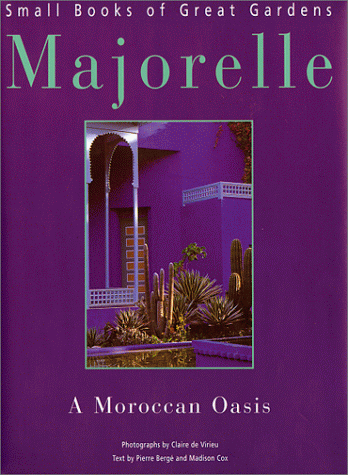I’ve always been captivated by the vibrant colors and intricate designs of Moroccan gardens. The blend of lush greenery, stunning mosaics, and tranquil water features creates a serene yet lively atmosphere that inspires me in countless ways.

Walking through a Moroccan garden feels like stepping into a different world. Every element, from the patterned tiles to the aromatic herbs, contributes to a harmonious and enchanting space. Whether you’re looking to transform your own backyard or simply seeking aesthetic inspiration, Moroccan gardens offer endless possibilities to ignite your creativity.
History Of Moroccan Gardens
Moroccan gardens trace their roots to ancient civilizations, blending Berber traditions with Islamic art. I find it fascinating how the Almoravid and Almohad dynasties shaped these gardens between the 11th and 13th centuries. These rulers emphasized symmetry and geometry, reflecting their architectural preferences.
Islamic influence introduced key elements like water features and intricate tile work. Water symbolizes life and purity, making fountains and pools central to garden design. I appreciate how these elements create a serene and balanced environment.
During the Saadian and Alaouite periods, gardens expanded with diverse plant species and elaborate mosaics. The Jardin Majorelle in Marrakech showcases this blend of vibrant colors and detailed patterns, inspiring many modern garden designs. By combining natural beauty with artistic precision, Moroccan gardens continue to enchant and influence gardeners worldwide.
Key Design Elements
Moroccan gardens showcase distinctive design elements that create their unique aesthetic. These features blend traditional artistry with natural beauty, offering endless inspiration.
Geometric Patterns
Geometric patterns define the structural layout of Moroccan gardens. They emphasize symmetry and balance, reflecting Islamic artistic principles. Intricate tile work and patterned pathways guide visitors through the space. Fountains and garden structures often feature repetitive shapes, enhancing visual harmony.
Vibrant Colors
Vibrant colors bring Moroccan gardens to life. Plant selections include flowering species like bougainvillea and vibrant foliage such as palms. Tile mosaics display bold hues, including blue, emerald, and terracotta. Colorful textiles and decorative accents add depth and energy, creating an inviting environment.
Plant Selection
Choosing the right plants is essential for capturing the essence of a Moroccan garden. I focus on species that thrive in similar climates and offer vibrant colors and textures.
Traditional Plants
Moroccan gardens feature a variety of traditional plants that contribute to their lush and vibrant appearance:
- Olive Trees: Symbolize peace and resilience, providing shade and structure.
- Citrus Trees: Including orange and lemon trees, they add fragrance and bright blossoms.
- Bougainvillea: Known for their vivid pink, purple, and red bracts, they create stunning visual displays.
- Palms: Offer an exotic touch and create a sense of tranquility.
- Lavender: Adds both color and a soothing scent, enhancing the garden’s ambiance.
- Fig Trees: Provide fruit and greenery, contributing to the garden’s diversity.
Modern Adaptations
- Succulents and Cacti: Require minimal water and add unique textures and shapes.
- Herb Gardens: Integrate culinary and medicinal herbs for practicality and fragrance.
- Drought-Resistant Varieties: Adapt to changing climates by selecting plants that reduce water usage.
- Mixed Plantings: Combine traditional and contemporary species to create dynamic and resilient landscapes.
- Vertical Gardens: Utilize vertical spaces to maximize green coverage and add visual interest.
- Innovative Irrigation Systems: Implement efficient watering techniques to support diverse plant selections.
Water Features
Water features define Moroccan gardens, symbolizing life and purity. Common types include fountains, reflecting pools, and cascades. Fountains often showcase intricate tilework, serving as garden focal points. Reflecting pools enhance symmetry and tranquility, while cascades introduce movement and soothing sounds.
Key design elements:
- Symmetry: Align water features with garden geometry.
- Materials: Use marble, tile, and stone for durability and aesthetics.
- Tilework: Incorporate mosaics in blue, turquoise, and terracotta hues.
- Lighting: Highlight water features with solar-powered lights for nighttime ambiance.
Maintenance ensures water quality and functionality. Efficient pumps minimize evaporation and energy use. Regular cleaning prevents algae growth and maintains visual appeal. Sustainable designs incorporate water conservation techniques, aligning with environmental principles.
Furniture And Decor
Selecting the right furniture and decor transforms a Moroccan garden into a comfortable and visually appealing retreat. Traditional seating includes low cushions and poufs arranged around ornate tables, creating intimate gathering spaces. Wrought iron and wood pieces feature intricate carvings and mosaic details, reflecting the garden’s artistic heritage.
Incorporating vibrant colors enhances the garden’s lively atmosphere. Bold textiles with geometric patterns add texture and interest to seating areas. Moroccan lanterns and sconces provide ambient lighting, casting beautiful shadows during evening hours. Decorative elements such as ceramic vases, brass trays, and patterned rugs complete the look, offering both functionality and aesthetic appeal.
If choosing materials, opt for durable options like teak, cedar, or metal to withstand outdoor conditions. Additionally, include water-resistant fabrics for cushions and upholstery to ensure longevity. By blending traditional craftsmanship with practical design, the furniture and decor in a Moroccan garden create a harmonious and inviting environment.
| Furniture Type | Description |
|---|---|
| Low Seating | Cushions, poufs arranged around central tables |
| Ornate Tables | Intricate carvings, mosaic details |
| Moroccan Lanterns | Ambient lighting with patterned shadows |
| Decorative Vases | Ceramic pieces in vibrant colors |
| Patterned Rugs | Geometric designs adding texture and color |
Integrating these elements ensures that the garden not only captivates with its beauty but also offers a welcoming space for relaxation and socializing.
Lighting Ideas
In Moroccan gardens, lighting transforms the space after dark, highlighting architectural features and creating a magical ambiance. I use traditional lanterns made of metal and colored glass to cast intricate patterns on walls and pathways. These lanterns come in various shapes, including hexagons and squares, adding geometric charm to the garden.
String lights are another popular choice. I drape them along pergolas, trees, and fences to provide soft, ambient illumination. Solar-powered options offer energy-efficient solutions, reducing the need for wiring and enhancing sustainability.
« Garden Benches: Top Material Options for Durability and Style Decorative Pebbles for Planting Beds: Boost Your Garden’s Beauty & Health »
Pathway lighting guides visitors through the garden. I place low lanterns or stake lights along walkways, ensuring safe navigation while maintaining aesthetic appeal. These lights emphasize the symmetry and order typical of Moroccan garden design.
Water features benefit from strategic lighting. I install underwater lights in fountains and reflecting pools to create shimmering effects on the water surface. Spotlights on cascades highlight the movement and add depth to the garden’s water elements.
Accent lighting showcases decorative elements. I focus beams on mosaic tiles, intricate carvings, and vibrant plant arrangements to draw attention to their beauty. This technique reinforces the vibrant colors and detailed artistry inherent in Moroccan gardens.
For seating areas, I incorporate soft lighting to create cozy and inviting spaces. Table lamps with mosaic bases and candlelight in lanterns provide gentle illumination perfect for evening gatherings. These lighting choices ensure that the garden remains a comfortable retreat at any hour.
Overall, combining traditional lanterns, string lights, pathway fixtures, water feature illuminations, and accent lights creates a cohesive and enchanting lighting scheme. This approach enhances the garden’s beauty and ensures it remains a captivating sanctuary day and night.
Conclusion
Creating a Moroccan-inspired garden has been such a rewarding journey for me The blend of vibrant colors and intricate designs truly transforms any space into a peaceful retreat
I love how the lush greenery and stunning mosaics come together to make each corner feel magical Incorporating these elements has not only enhanced my garden but also brought a sense of serenity to my daily life
If you’re looking to add some charm and beauty to your outdoor space consider Moroccan garden inspiration It’s amazing how a few thoughtful touches can make your garden a haven for relaxation and enjoyment
















